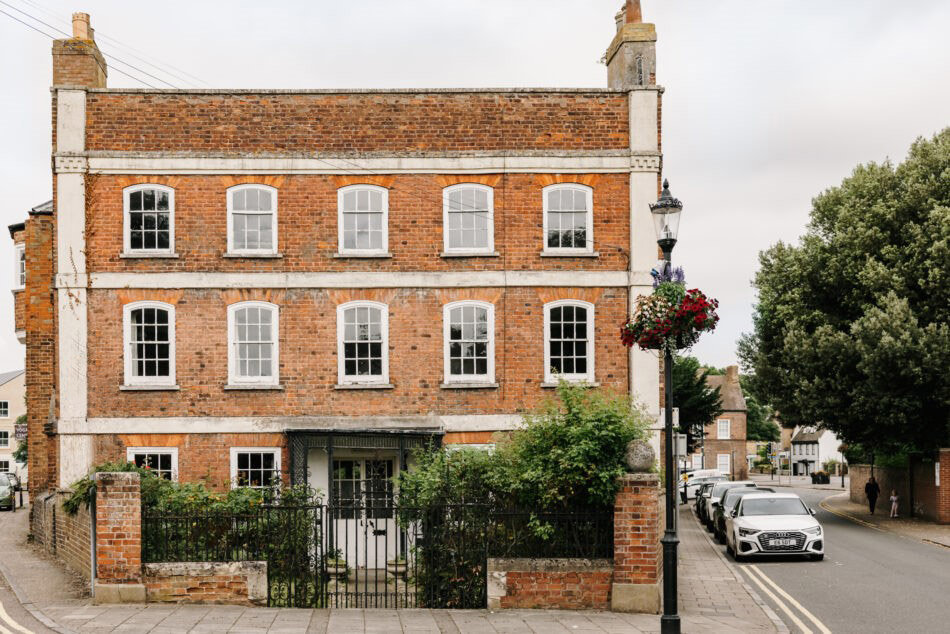The Grand Tour
A path leads through the rose-planted front garden to the intricate latticework porch, where a glazed door opens into a wide, stone-flagged hallway, with three sets of decorative paired columns. The house has lovely proportions, typical of the Georgian period, with some features dating from even earlier. Immediately to the right is a study with original, now-white-painted panelling on the walls and an open brick fireplace dating from the early 20th century. Another corridor leads to a guest WC beyond.
Across the hallway is the dining room, half of which is clad with original Georgian oak panelling, and half of which has newer panelling dating from the early 20th century. This room leads to a kitchen, which requires some updating. The hallway then leads in turn to the Georgian addition and the drawing room. This is a wonderfully light and airy room, with high ceilings, bay windows and a set of French doors that open to the rear garden. Wooden panelling, arches and engaged columns decorate the walls and frame the wood-burning stove, which has been set into a Delft-tiled fireplace. A rear hall by the back door completes the ground floor accommodation.
A fine staircase, with turned balusters and a hardwood scalloped handrail, ascends to the first floor, past a beautiful arched Georgian window. The upstairs corridor is decorated with deep dentilled cornicing and moulded plaster ceiling details. There are three generous double bedrooms on this floor with the main bedroom situated at the rear of the house, in the Georgian addition. It has high ceilings, large windows and fantastic floral wallpaper, as well as an en suite bathroom with art deco green tiles and sink. There is also a family bathroom, a laundry room, and another room currently set up as a studio at the top of a secondary staircase.
On the top floor, there are four further bedrooms and a large storeroom. The bedrooms have original lime plaster on the walls, original sash windows and wooden floorboards underfoot. One of the rooms could potentially be converted to an additional bathroom, subject to any necessary consents.
The Great Outdoors
The wonderfully private rear garden is enclosed by a tall brick wall. One section is laid to lawn, while the rest is comprised of beautifully planted flowerbeds and a number of mature trees.
There is pedestrian access to the side street and access to a single garage from the garden. There are also two private parking spaces in nearby Chapel Court.
Out and About
Huntingdon is an historic market town on the north bank of the River Great Ouse. The town is well served by a range of shopping, cultural and recreational facilities; it is also home to the
Old Bridge Hotel. Cambridge is half an hour by car from Whitwell House; famous for its university and college buildings, it is home to numerous excellent schools, pubs, shops, parks, a weekly market and punting on the River Cam.
There is a good selection of state schooling for both primary and secondary in Huntingdon, as well as private schooling at nearby Kimbolton.
The station is a short walk from the house and runs trains to London King’s Cross in an hour. The house also has easy access onto the A14, which leads east to west, north to the A1 and south to the M25 and London. The recently improved A14 joins the M11 at Cambridge and in the other direction connects with the M1 & M6 and A43, providing easy access to Oxford and beyond.
